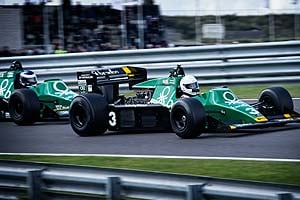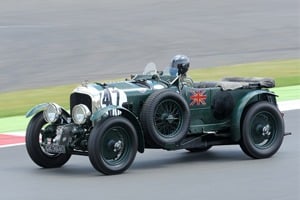Silverstone
Motor Racing Circuit, Silverstone, UK
The History of Silverstone Circuit: From Airfield to F1 Icon
Few racetracks in the world carry the weight of history and prestige that Silverstone does. Known as the “Home of British Motorsport,” Silverstone has played host to legendary races, iconic drivers, and unforgettable moments. But its story goes back far beyond Formula 1, beginning not with racing cars but with aircraft.
From Airfield to Race Track
Silverstone’s origins lie in World War II. Built in 1943, the site was originally RAF Silverstone, a bomber station used by the Royal Air Force. After the war ended, Britain faced a boom in motorsport enthusiasm. With public roads deemed too dangerous for racing, disused airfields became the perfect solution.
In 1948, the Royal Automobile Club (RAC) selected Silverstone as the venue for the first British Grand Prix after the war. Makeshift straw bales and ropes lined the track, while a farmer’s sheep had to be cleared off the circuit before the race began.
The First Formula 1 World Championship Race
Silverstone cemented its place in history on May 13, 1950, when it hosted the first-ever Formula 1 World Championship race. King George VI and Queen Elizabeth attended, marking the only time a reigning monarch has attended a British Grand Prix. Italian legend Giuseppe Farina claimed victory in his Alfa Romeo, setting the tone for decades of racing heritage.
Evolution of the Circuit
The track has undergone many changes over the decades. The original layout used the wide runways and perimeter roads of the airfield, creating a fast, sweeping circuit. Over time, safety concerns and the demands of modern racing led to redesigns:
-
1970s–80s: Chicanes were introduced at high-speed corners like Woodcote to slow cars down.
-
1991: The most dramatic overhaul came with the addition of new sections like Maggotts, Becketts, and Chapel—now regarded as one of the greatest sequences of corners in motorsport.
-
2010: A new “Arena” layout extended the lap length and improved facilities, ensuring Silverstone remained on the F1 calendar amid rising competition from newer tracks.
Iconic Moments
Silverstone has witnessed countless defining moments in motorsport:
-
1955: Stirling Moss became the first British driver to win his home Grand Prix.
-
1987: Nigel Mansell’s famous victory over Nelson Piquet, sealing his place as a national hero.
-
1998: Michael Schumacher’s controversial pit-lane victory, crossing the line while serving a penalty.
-
2008: Lewis Hamilton’s masterclass in the wet, winning by over a minute in treacherous conditions.
Each generation of drivers has left its mark, ensuring Silverstone’s legacy continues to grow.
Beyond Formula 1
While Formula 1 is the crown jewel, Silverstone is far from a one-trick pony. The circuit regularly hosts MotoGP, endurance races, touring cars, and grassroots motorsport. Its facilities have expanded into a year-round hub for driving experiences, corporate events, and even music festivals.
The Future of Silverstone
Despite constant challenges—financial pressures, competition from global venues, and the ever-increasing demands of Formula 1—Silverstone has endured. Investments in infrastructure and sustainability ensure it remains at the forefront of motorsport for decades to come.
For fans, Silverstone is more than just a racetrack—it’s a symbol of Britain’s deep connection to racing. From the roar of early Alfas to the hybrid beasts of today, every lap echoes with history.
- Display 30 Products per page



